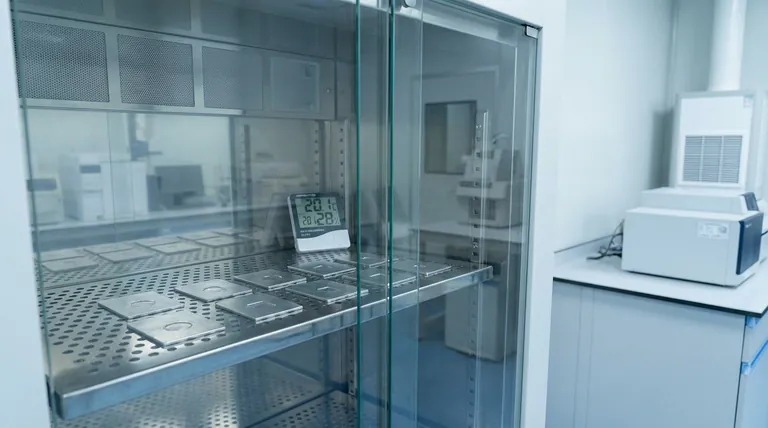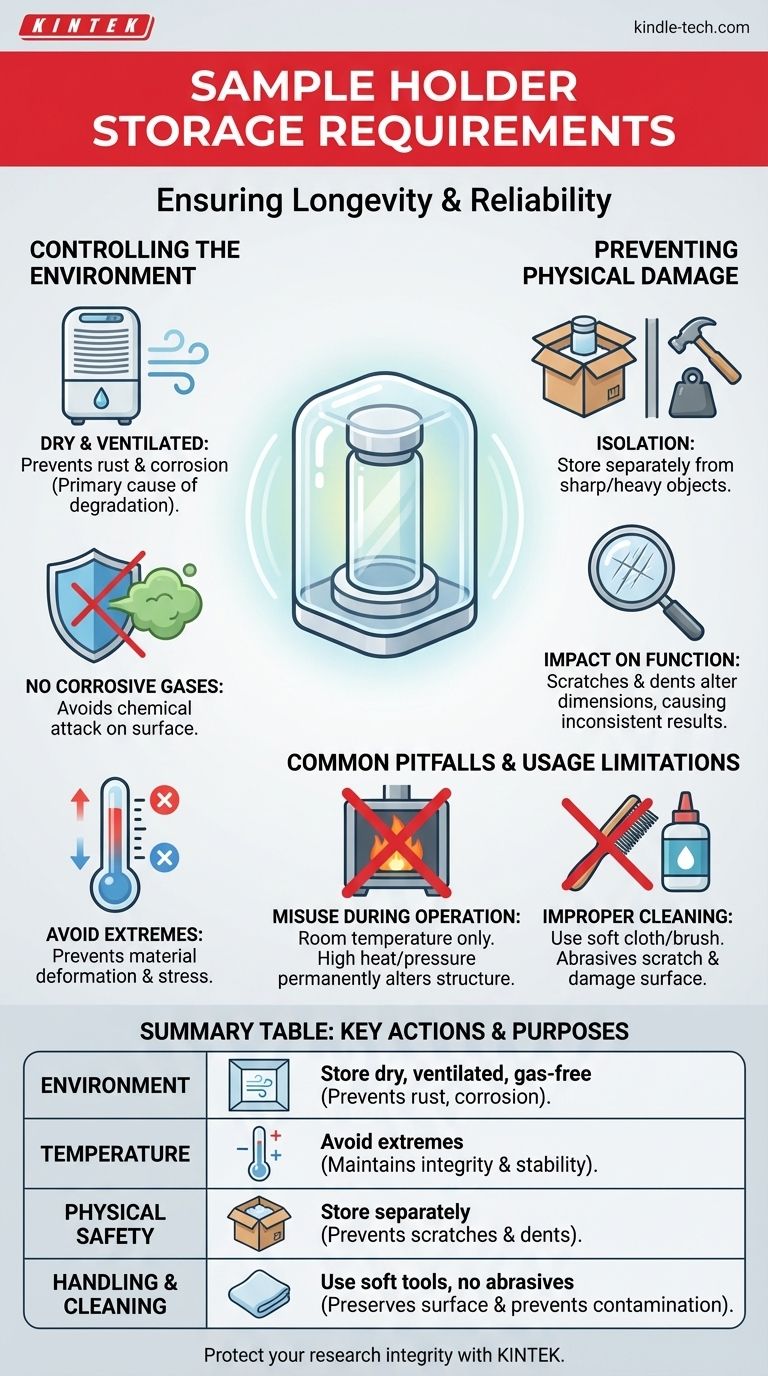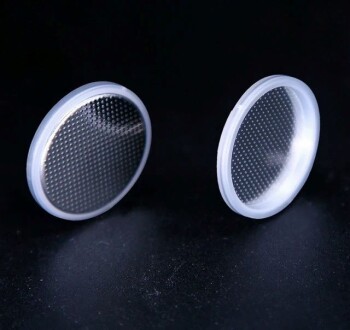Properly storing your sample holder is a critical step in ensuring its longevity and the reliability of your experimental results. The fundamental requirements are to keep it in a dry, ventilated environment that is free from corrosive gases. You must also avoid extreme temperatures and protect it from physical impact by storing it separately from heavy or sharp objects.
The goal of a proper storage protocol is not merely organization; it is to actively preserve the physical, chemical, and electrical integrity of the sample holder, which is essential for accurate and repeatable measurements.

The Core Principles of Sample Holder Integrity
To maintain the holder's performance, you must control its environment and protect it from physical harm. These are not suggestions but requirements for maintaining a calibrated and reliable instrument.
Controlling the Environment
The atmosphere surrounding the holder can be its greatest threat.
- Humidity and Ventilation: Store the holder in a dry, ventilated area. Moisture in the air is a primary cause of rust and corrosion, which can contaminate samples and degrade the holder's material.
- Corrosive Gases: Ensure the storage space is free from corrosive gases. Vapors from acids or other reactive chemicals can aggressively attack the holder's surface, altering its chemical and electrical properties.
- Temperature Extremes: Avoid storing the holder in high-temperature or low-temperature conditions. Extreme heat can cause materials to deform or alter their structure, while excessive cold can also lead to material stress.
Preventing Physical Damage
Physical integrity is just as important as chemical stability.
- Isolation: The holder should always be stored separately from other sharp or heavy objects. Accidental contact can cause scratches, dents, or compression.
- Impact on Function: Scratches and deformation are not just cosmetic issues. They can alter the precise dimensions of the reaction area or prevent the sample from seating correctly, leading to inconsistent results.
Common Pitfalls and Usage Limitations
A component's lifespan is defined by its use and maintenance as much as its storage. Understanding its limitations is key to preventing irreversible damage.
Misuse During Operation
The sample holder is designed for a specific operating window.
- Temperature Limits: The holder is explicitly intended for use at room temperature. Exposing it to high-temperature or high-pressure conditions is a common and costly mistake.
- Why It Matters: High temperatures can permanently alter its internal structure. This change can affect critical properties like electrical conductivity and chemical stability, rendering the holder useless for accurate measurements.
Improper Cleaning Techniques
Aggressive cleaning can cause as much damage as a poor storage environment.
- Correct Method: Regularly wipe the surface with a soft, dust-free cloth to remove dust and stains. For crevices, use a clean, soft-bristled brush.
- What to Avoid: Never use abrasive cloths or corrosive cleaning agents. These will scratch or chemically damage the surface, compromising its integrity and leading to measurement artifacts.
Making the Right Choice for Your Lab
Your specific priorities will determine which aspects of care require the most attention.
- If your primary focus is cost-effectiveness and longevity: Prioritize strict environmental controls to prevent irreversible rust, corrosion, and deformation.
- If your primary focus is experimental accuracy and repeatability: Emphasize meticulous handling, proper cleaning, and separate storage to prevent physical damage and contamination that could skew your data.
Adopting these simple, disciplined habits will protect your valuable assets and ensure the continued integrity of your work.
Summary Table:
| Requirement | Key Action | Purpose |
|---|---|---|
| Environment | Store in a dry, ventilated area, free from corrosive gases. | Prevents rust, corrosion, and chemical degradation. |
| Temperature | Avoid extreme heat or cold. | Maintains material integrity and structural stability. |
| Physical Safety | Store separately from sharp/heavy objects. | Prevents scratches, dents, and functional damage. |
| Handling & Cleaning | Use soft cloths/brushes; avoid abrasives and corrosive agents. | Presures surface integrity and prevents contamination. |
Protect your research integrity with the right equipment and care. Proper sample holder storage is just one part of ensuring accurate, repeatable results. At KINTEK, we specialize in high-quality lab equipment and consumables designed for precision and durability. Whether you need reliable sample holders, furnaces, or other laboratory essentials, our products are built to meet the rigorous demands of your work.
Let us help you maintain the highest standards in your lab. Contact our experts today to find the perfect solutions for your specific needs and ensure your equipment performs flawlessly, experiment after experiment.
Visual Guide

Related Products
- Customizable XRD Sample Holders for Diverse Research Applications
- Custom PTFE Wafer Holders for Lab and Semiconductor Processing
- Customizable PTFE Wafer Carriers for Semiconductor and Lab Applications
- Button Battery Case for Battery Lab Applications
- Rubber Vulcanizer Vulcanizing Machine Plate Vulcanizing Press for Lab
People Also Ask
- What is the difference between XRF and XRD techniques? A Guide to Choosing the Right Analytical Tool
- What affects melting point chemistry? A Guide to Molecular Forces and Lattice Energy
- What are the factors that affect melting and boiling point? Unlock the Science of Phase Transitions
- What are the temperature and pressure limitations for using the sample holder? Essential Guide for Lab Safety
- What are the limitations of the IR spectroscopy? Understanding Its Boundaries for Accurate Analysis









